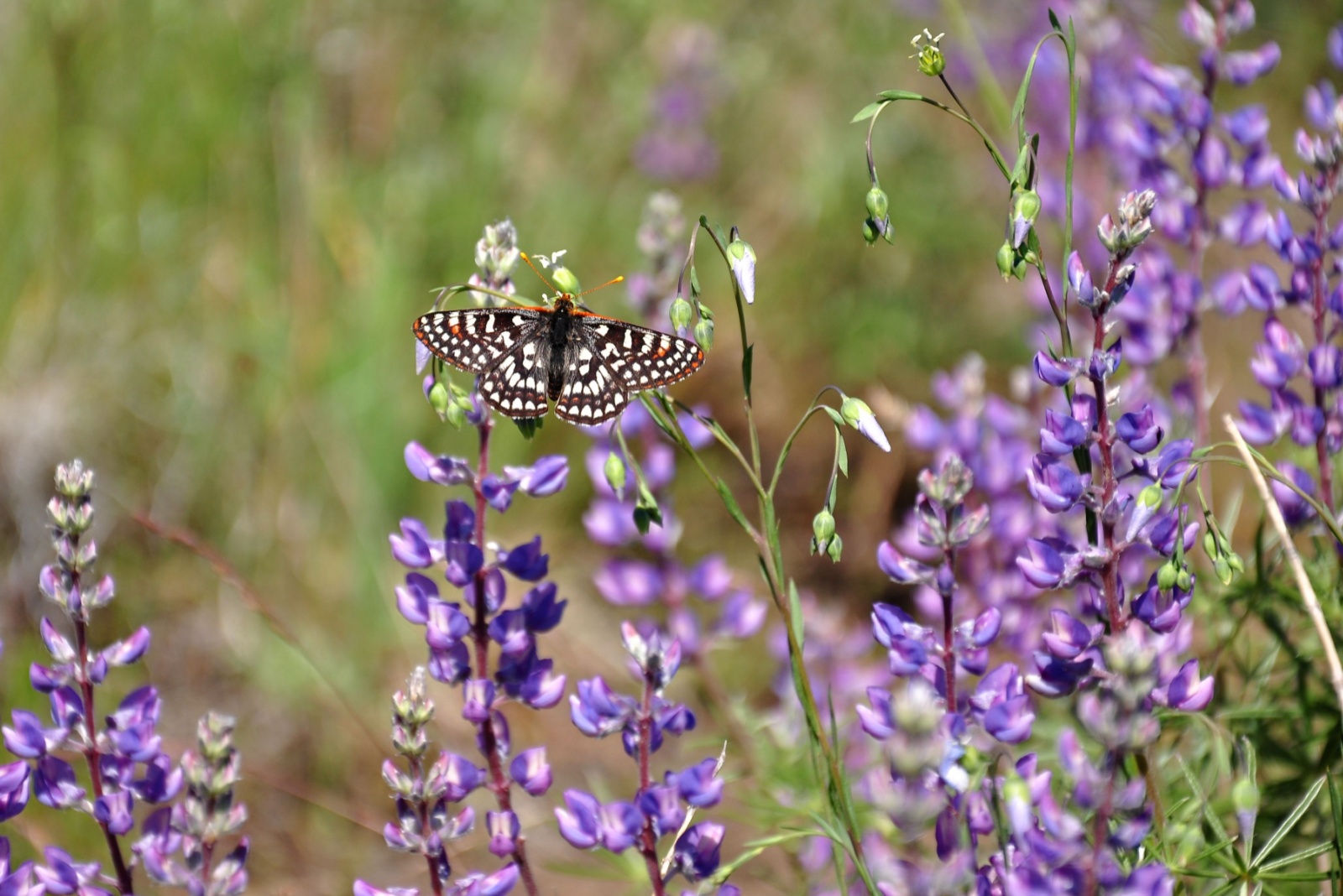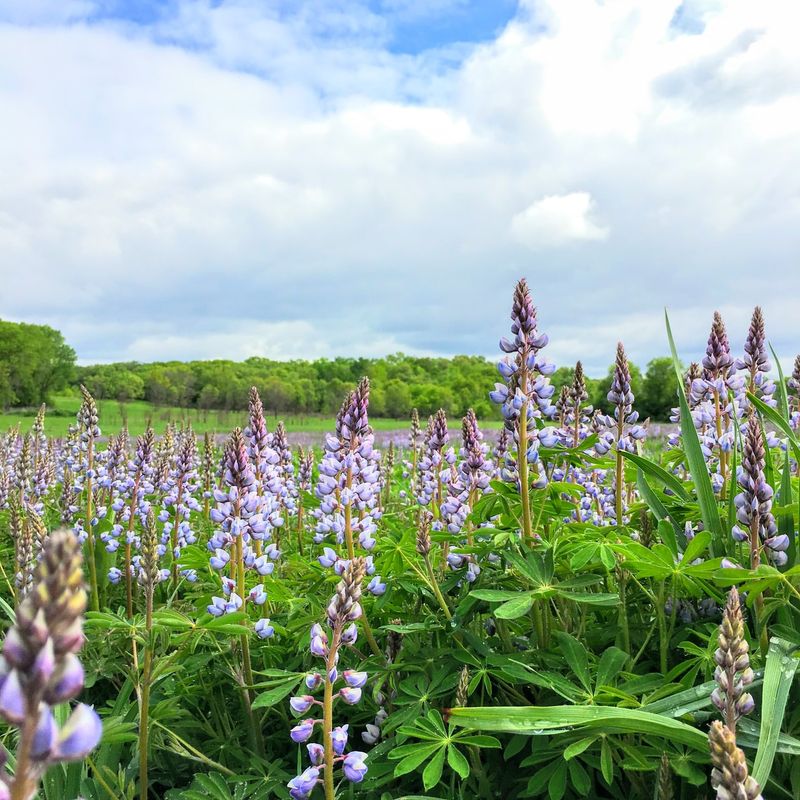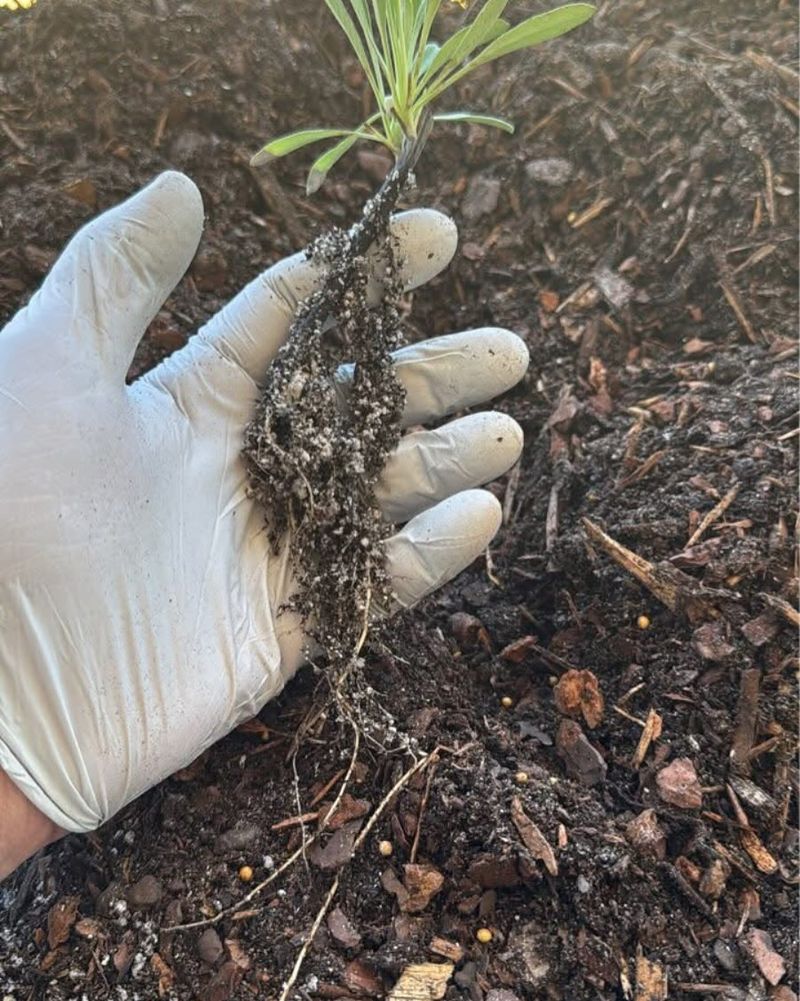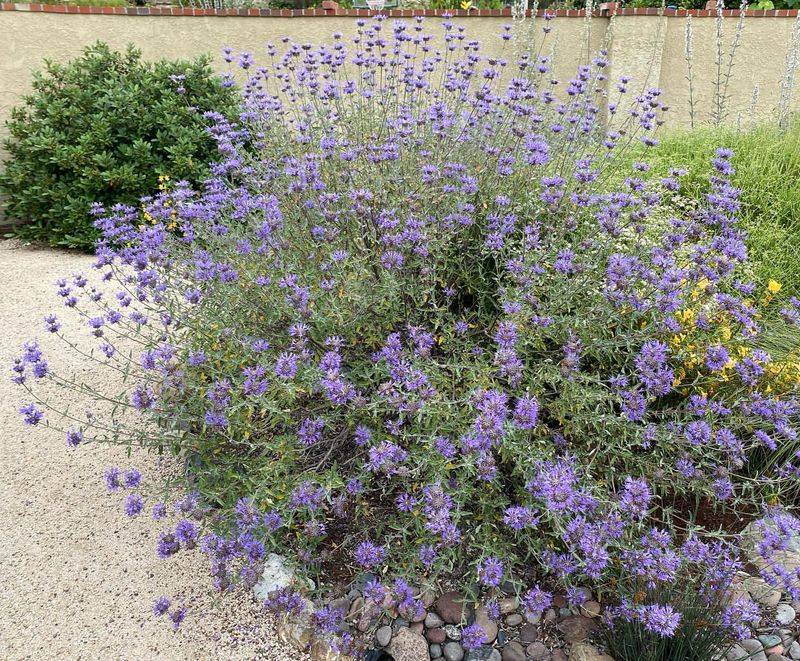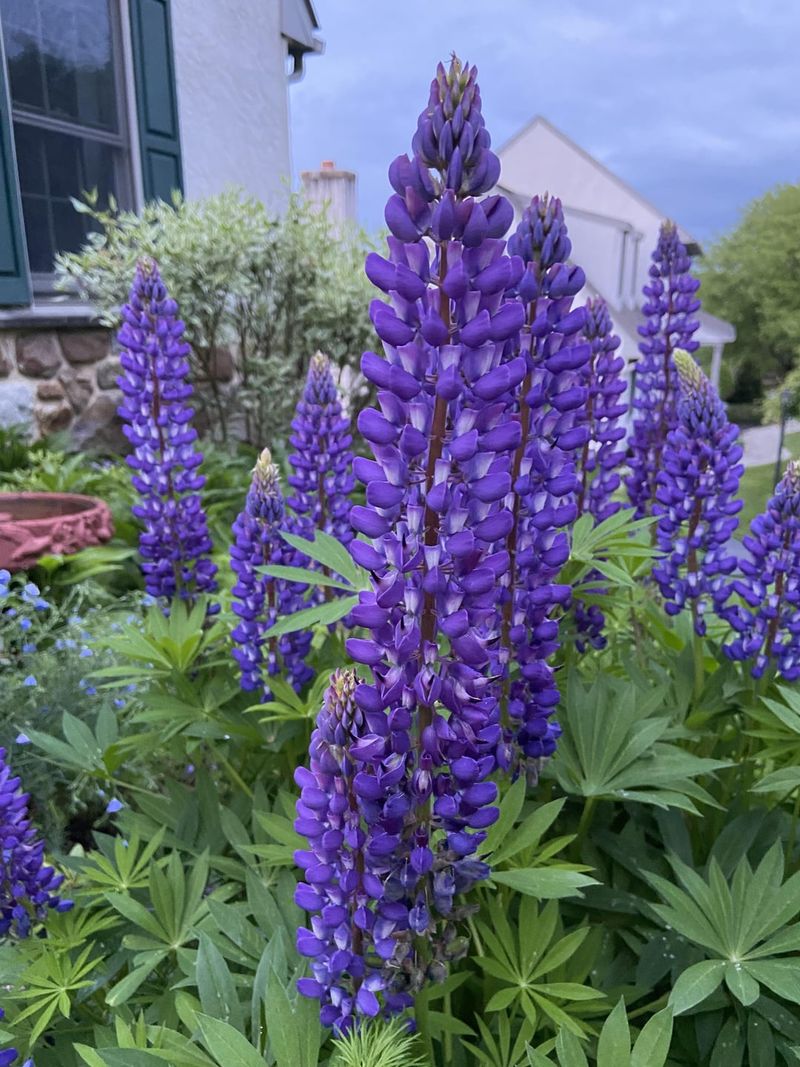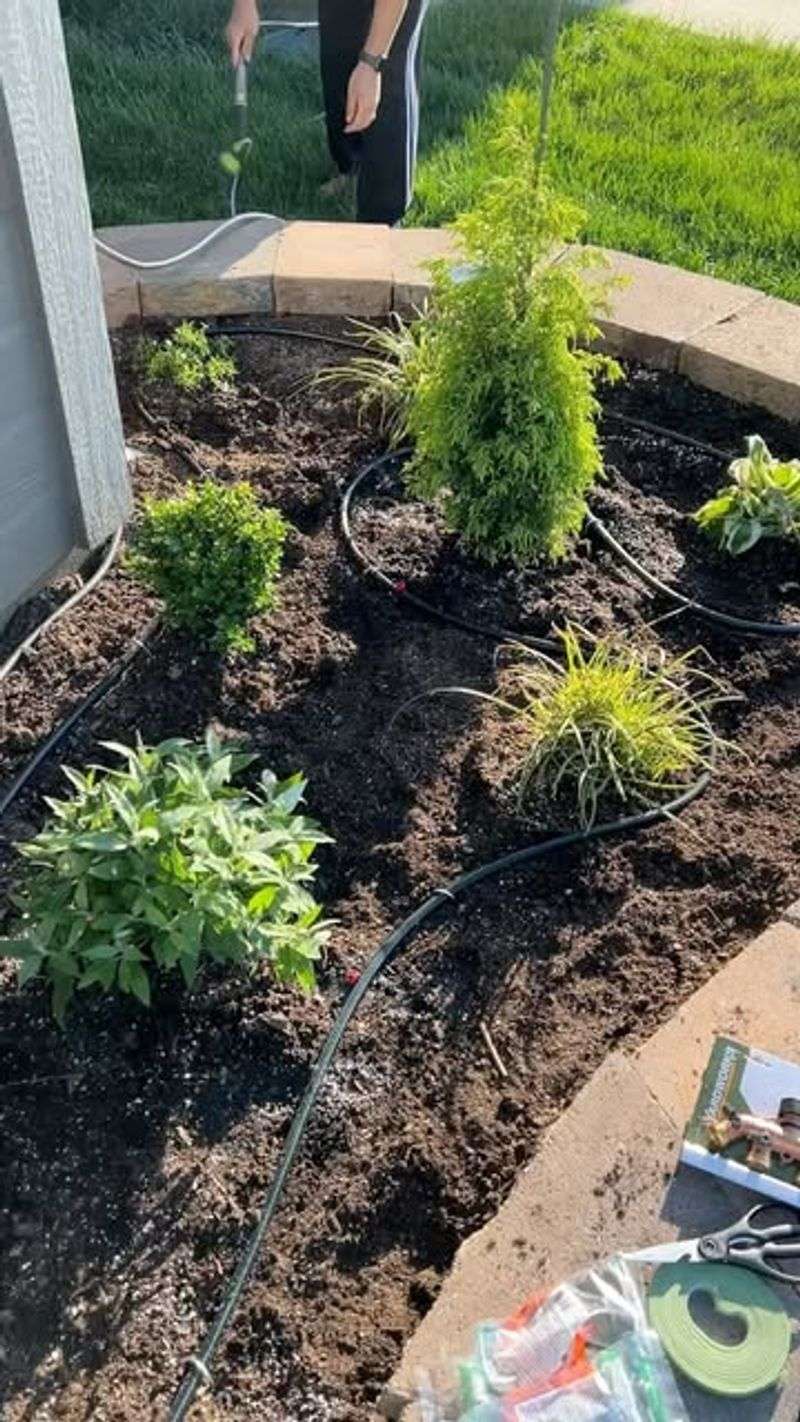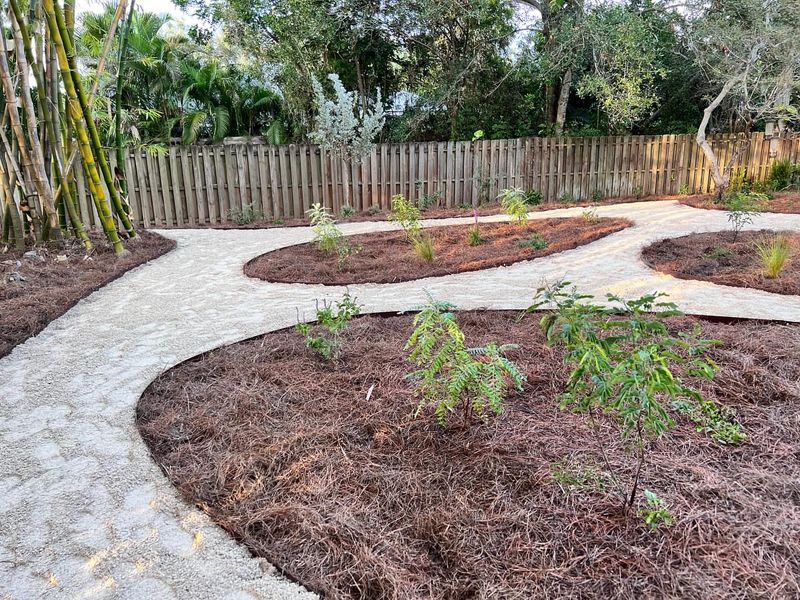Creating pollinator strips with native plants in your San Diego yard helps local bees, butterflies, and birds thrive while adding beauty to your outdoor space. Native salvias and lupines are perfect choices because they’ve adapted to our local climate and require less water than non-native plants.
Transforming even a small section of your yard into a pollinator paradise is easier than you might think!
1. Choose The Right Location
Sunny spots work best for native salvias and lupines, which need at least 6 hours of direct sunlight daily. Pick an area visible from windows so you can enjoy watching the butterflies and hummingbirds that will visit.
Avoid places with heavy foot traffic or where children play frequently. Your pollinator strip should feel like a safe haven for delicate creatures seeking nectar and pollen. A strip along a fence or property line often makes an ideal location.
2. Prepare Your Soil Properly
Native San Diego plants like well-draining soil with minimal amendments. Remove all existing grass and weeds from your chosen area, digging about 6-8 inches deep to eliminate roots that might compete with your new plants.
Contrary to common gardening advice, don’t add rich compost or fertilizers! Native salvias and lupines actually prefer leaner soil. Simply loosen compacted dirt and add a bit of sand if your soil tends to hold too much water.
3. Select Native Salvia Varieties
Cleveland sage (Salvia clevelandii) ranks among the best choices for San Diego gardens with its aromatic gray-green leaves and stunning blue-purple flower spikes. Black sage (Salvia mellifera) and white sage (Salvia apiana) also attract numerous pollinators.
For smaller spaces, try Bee’s Bliss sage, which spreads horizontally rather than vertically. Mix different varieties for continuous blooming from spring through fall. Native salvias have evolved alongside local pollinators, making them irresistible to bees and butterflies.
4. Pick Perfect Lupine Species
Arroyo lupine (Lupinus succulentus) brings gorgeous purple-blue flower spikes to your garden and thrives in San Diego’s climate. These spring bloomers provide crucial early-season nectar for pollinators emerging from winter.
Bush lupine (Lupinus longifolius) offers another excellent option with its silvery foliage and tall flower stalks. Miniature lupine works well for garden edges or containers. Remember that lupines fix nitrogen in soil, improving conditions for neighboring plants naturally!
5. Space Plants Strategically
Group at least three of each plant variety together to create visual impact and make it easier for pollinators to find them. Space salvias about 3-4 feet apart since they’ll grow quite large, while lupines can be placed 1-2 feet apart.
Arrange taller plants toward the back of your strip and shorter ones in front. Staggering bloom times ensures continuous food sources for pollinators throughout the seasons. A zigzag pattern often works better than straight rows, creating a more natural look.
6. Master Watering Techniques
Native plants need regular water during their first year while establishing roots. Water deeply once or twice weekly rather than frequent shallow sprinkles. Morning watering reduces evaporation and fungal issues.
After establishment, most native salvias and lupines require minimal supplemental water – perhaps monthly during summer. Consider installing drip irrigation with a timer to make watering effortless. Overwatering actually harms these drought-adapted plants more than underwatering!
7. Apply Natural Mulch
Spread a 2-inch layer of mulch around your plants, keeping it away from stems to prevent rot. Small bark chips or decomposed granite work perfectly for native plant gardens in San Diego’s climate.
Mulch suppresses weeds, retains moisture, and gradually improves soil as it breaks down. Avoid rubber mulch, dyed products, or heavy wood chips that might suffocate delicate native plants. Some gardeners collect and scatter oak leaves as free, natural mulch that mimics conditions where these natives evolved.
8. Maintain With Minimal Pruning
Leave spent lupine seedheads in place after flowering – they’ll release seeds for next year’s blooms and provide food for birds. Salvias benefit from light pruning after their main flowering period, typically reducing stems by about one-third.
Resist the urge to tidy up too much! Hollow stems and leaf litter provide nesting sites for native bees. Many butterfly species lay eggs on seemingly dead plant material during winter. Your slightly messy pollinator strip actually creates vital habitat for creatures that keep your garden thriving.

